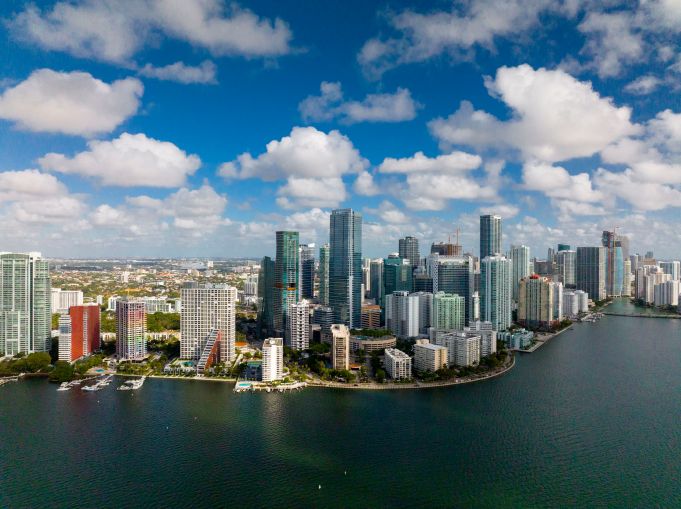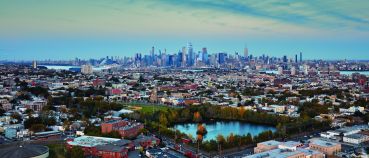In South Florida, Black Professionals Are Hard to Find in Real Estate
The region is one of the country's most demographically diverse but that hasn't translated into a greater presence for Black brokers, contractors and developers
By Jeff Ostrowski June 19, 2023 6:00 am
reprints
South Florida is one of the nation’s most demographically diverse regions, but the Miami metro area’s commercial real estate industry represents only a fragment of its cultural variety.
Latino developers, brokers and lenders play an important role in Miami’s real estate scene. And women long ago cracked the glass ceiling, while slowly attaining more prominence within the industry.
But Black brokers, developers and other professionals are notably absent from the region’s commercial real estate industry. It’s a reality that often greets Michael Brown, executive vice president and general manager for Florida at contractor Skanska. Brown is African American.
“When I go into boardrooms and meet many of my peers, it’s sometimes daunting to be the only one, or one of the few,” Brown told Commercial Observer. “But I do think our industry is evolving. While it’s been somewhat slow to evolve, it is evolving.”
For a time, though, it looked like the struggle had entered the endgame. After George Floyd’s murder in 2020 and the ensuing racial justice demonstrations, many in the industry decided to take a more assertive approach to bringing in Black Americans, said Gil Borok, president and CEO of Colliers (CIGI).
The brokerage’s efforts include a recruiting campaign aimed at students of historically Black colleges and universities. “Like many industries, the commercial real estate industry has historically been white male-dominated, but it has been slower than most to diversify,” Borok said via email.
If South Florida’s commercial real estate industry reflected the overall population, there’d be more Black brokers and executives. The Miami-Fort Lauderdale metropolitan area has 6 million residents, according to the U.S. Census Bureau. The population is 46 percent Latino, 28 percent white and 19 percent Black.
Despite those numbers, there are just 40 Black developers in the entire state of Florida, according to a study of racial diversity in real estate from the Initiative for a Competitive Inner City and Grove Impact. Nationwide, just 2 percent of real estate businesses are Black-owned and just 6 percent Latino-owned, while the share of Black and Latino developers is less than 1 percent combined, according to the research.
Reflecting Miami’s unique demographics, the metro ranks fifth nationwide for Latino developers relative to population versus 11th for Black developers, per the report. Nevertheless, it doesn’t take data to notice the disparity. Visit any industry function, or peruse the websites of commercial real estate companies and the local chapters of NAIOP and Commercial Real Estate Women, and the reality is obvious: The industry includes many Latinos and women, but very few Blacks. And while overt racism has long been unacceptable in the commercial real estate industry, it has struggled to attract and retain Black talent in South Florida and elsewhere.
The region’s most prominent Black developer remains Don Peebles, who moved to South Florida from Washington, D.C., in 1998. Peebles made a splash in the 1990s by buying the Bath Club, a formerly segregated beachfront property in Miami Beach. Peebles remains one of the few prominent Black developers in the city.
Peebles did not respond to requests for comment for this article. In a separate interview during a June event to mark the 10th anniversary of the New York Real Estate Chamber, which he co-founded, Peebles said “the biggest impediment” to minority developers in particular was a lack of access to capital. Such access, he said, typically comes from longer business relationships that can be harder to build if you don’t have the connections to begin with.
The lack of role models and personal connections to entrenched and well-capitalized players in real estate does tend to hamper the rise of Black newcomers to the industry.
There’s also the matter of the eat-what-you-kill pay structure for brokers. Rookies might not get paid for months or years. Most Black Americans possess a fraction of the wealth held by white Americans, and the option of taking a job with an uncertain paycheck can be daunting.
“Outside of brokerage, say in property management or support services, where compensation is more guaranteed, there is significantly more diversity,” Borok said.
That’s one area where JLL is attempting to remove an obstacle standing in the way of recruiting talent. Rod Barnes, who is JLL’s South Florida region market director based in Miami, said the company is boosting entry-level salaries to attract more diverse recruits.
“Your peers are going to a corporate job with a career path and a healthy salary to start. You go to work for a commercial real estate firm, and you’re on a $40,000 or $50,000 draw,” Barnes, who is African American, told Commercial Observer. “It’s difficult for minorities to make it through that first two or three years because they might not have the family support.”
Barnes wouldn’t disclose the salary levels offered to new brokers, but he did say it’s enough to remove a common objection about going to work in a job where the first commission check might be months or years away. “We’re trying to get rid of the economic reason,” Barnes said. “You have to invest in young talent to keep them. The people we’re going after have alternatives. We want to make it compelling for them to come here and stay here.”
Corporate clients increasingly are demanding diversity from their commercial real estate teams, Barnes said. And he sees the industry slowly becoming more racially diverse. “It’s great to see the changes that have happened,” Barnes said. “We still have a ways to go.”
While African Americans remain rare in Miami’s commercial real estate industry, the industry has shown it’s capable of adapting. When office broker Tere Blanca started in the 1980s, women were rare. “I was the only woman in the room for many years,” Blanca told CO. “Thankfully, that isn’t the case anymore.”
Like many in the industry, Blanca has become a proponent of touting opportunities in commercial real estate to those who might not be aware.
“We like to be in front of high school students, in front of middle school students, in front of university students,” Blanca said. “Education about the industry is critical to bring in the minority base. The industry needs to reflect the community that it serves.”
In one formal effort to bring diversity to the industry, Project Destined, a nationwide program, has partnered with the University of Miami’s real estate program to train young professionals.
And many companies are setting the stage for a more diverse workforce.
“At Skanska we don’t care what you look like, where you came from, who you love, any of that stuff,” Brown said. “We’re going to judge people by their effort and their ability to learn and their performance.”
Jeff Ostrowski can be reached at jostrowski@commercialobserver.com.


